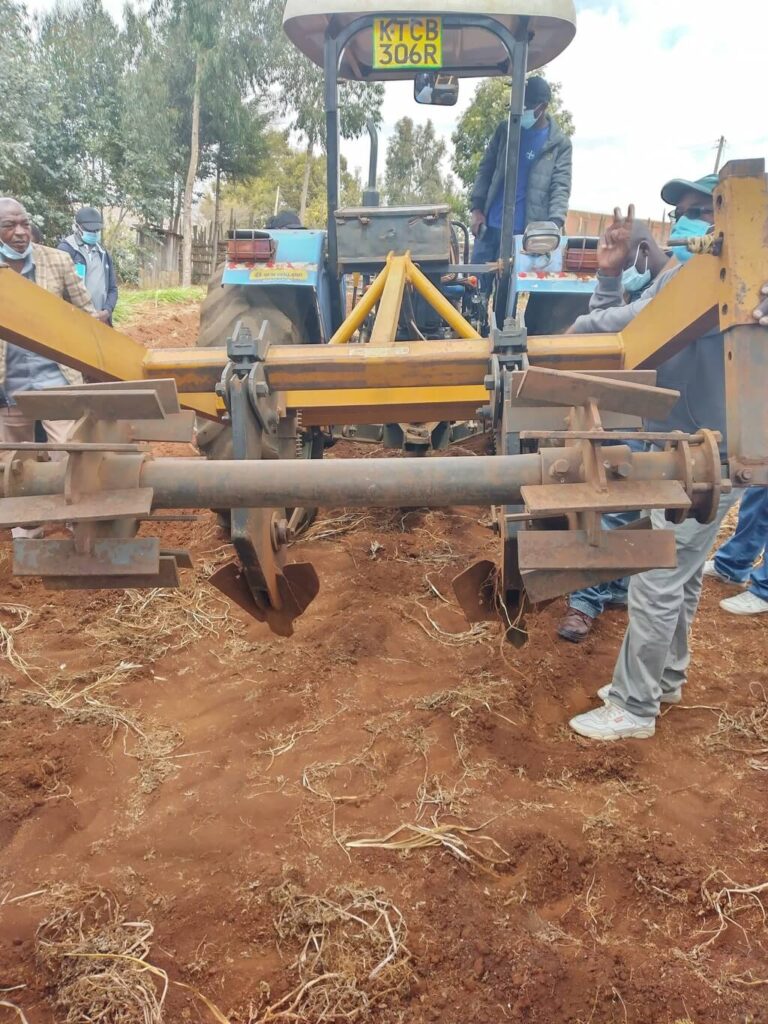Moving away from cultivating his soil with a disc plough to a chisel plough has helped Ken Mworia, a maize farmer in Giaki in Meru County, increase his yield from 15 bags to 20 bags an acre in two and a half years.
Having gotten information on the benefits the use of chisel ploughs had for other farmers through the conversation farming-focused PAFID website the 26-year-old was able to get access to a chisel-mounted tractor through the organisation’s agriculture field officer in Meru.
“We have a network of Mechanical Service Providers (MSPs) in 25 counties who operate tractors fitted with chisels or rippers that are leased to individual farmers,” said PAFID’s Meru and Tharaka Nithi Field Supervisor Josphat Musenze.
This costs a farmer between Sh3,000 and 2,500 an acre depending on the distance from the tractor service provider, the topography and slope of the farmer’s land, as well as the size of the tilling area.
Continued use of disc ploughs leads to the formation of a soil hardpan– a dense layer of soil that makes it impossible for crop roots or water to penetrate.
Most disc ploughs in Kenya operate to a depth of under 10cm. This loosens and turns over a thin film of soil above the plough which limits available soil for crop growth. ‘Below the plough an equal and opposite reaction results in compression of that lower soil to create a compacted layer’.(Tiyeni)
This causes a delay in water infiltration reducing water conservation which causes crops to dry very quickly during periods of limited water availability. It also increases soil erosion through runoff water and the sweeping away of fertile loose topsoil.
Unlike disc ploughs, chisels are fitted with tines or rippers that penetrate the soil up to 30 centimeters deep. This increases water infiltration and keeps water runoff to a minimum. Even limited irrigation therefore is quickly absorbed and stored by the soil where it is accessible to the crop when it needs it.
Also, by perforating deep into the soil profile, ripping gives crop roots access to leached minerals.
“By using a chisel plough I also preserve my soil’s structure and increase the availability of microorganisms in the soil as it is minimally disturbed when cultivating. This, in turn, has increased the long-term health of my soil and also reduced water erosion,” Mworia said.
Read more:
Meru potato farmers increase yields fourfold through conservation agriculture
Farmers half costs with ripper ploughing in conservation agriculture
7.500 farmers access cheap agriculture machinery through self-help model
